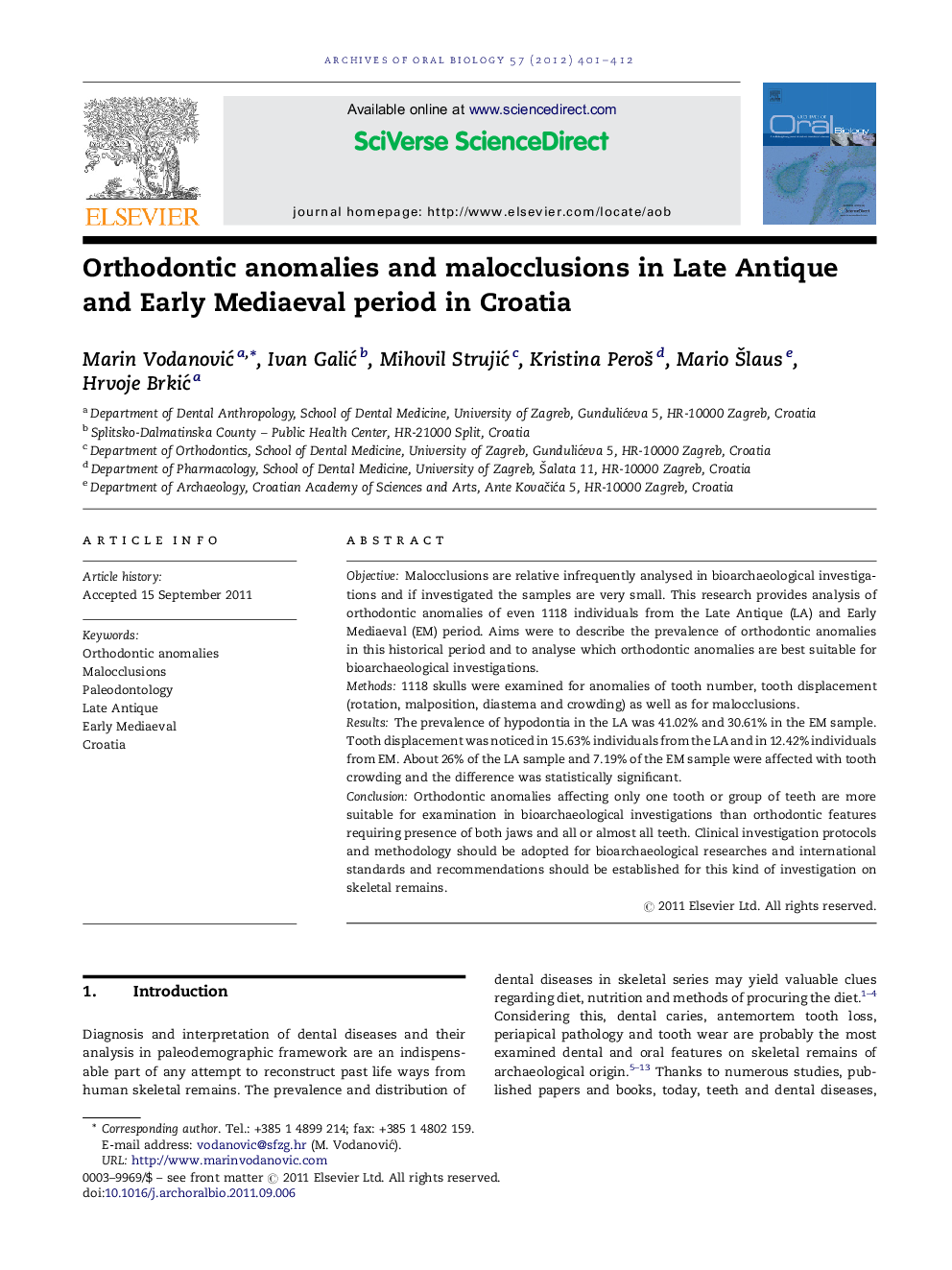| Article ID | Journal | Published Year | Pages | File Type |
|---|---|---|---|---|
| 3120902 | Archives of Oral Biology | 2012 | 12 Pages |
ObjectiveMalocclusions are relative infrequently analysed in bioarchaeological investigations and if investigated the samples are very small. This research provides analysis of orthodontic anomalies of even 1118 individuals from the Late Antique (LA) and Early Mediaeval (EM) period. Aims were to describe the prevalence of orthodontic anomalies in this historical period and to analyse which orthodontic anomalies are best suitable for bioarchaeological investigations.Methods1118 skulls were examined for anomalies of tooth number, tooth displacement (rotation, malposition, diastema and crowding) as well as for malocclusions.ResultsThe prevalence of hypodontia in the LA was 41.02% and 30.61% in the EM sample. Tooth displacement was noticed in 15.63% individuals from the LA and in 12.42% individuals from EM. About 26% of the LA sample and 7.19% of the EM sample were affected with tooth crowding and the difference was statistically significant.ConclusionOrthodontic anomalies affecting only one tooth or group of teeth are more suitable for examination in bioarchaeological investigations than orthodontic features requiring presence of both jaws and all or almost all teeth. Clinical investigation protocols and methodology should be adopted for bioarchaeological researches and international standards and recommendations should be established for this kind of investigation on skeletal remains.
